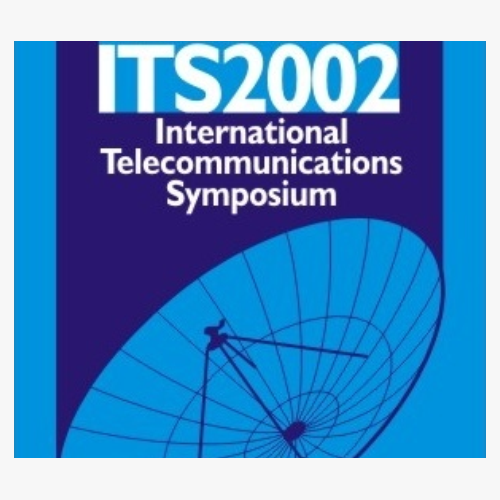
2002 International Telecommunications Symposium
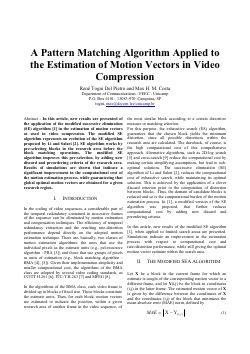
A Pattern Matching Algorithm Applied to the Estimation of Motion Vectors in Video Compression
Renê Togni Del Pietro, Max H. M. Costa
DOI: 10.14209/its.2002.546
Keywords:
Abstract
"In this article, new results are presented of the application of the modified successive elimination (SE) algorithm [1] in the estimation of motion vectors as used in video compression. The modified SE algorithm represents an evolution of the SE algorithm proposed by Li and Salari [2]. SE algorithm works by pre-selecting blocks in the research area before the block matching operations. The modified SE algorithm improves this pre-selection, by adding new discard and preordering criteria of the research area. Results of simulations are shown that indicate a significant improvement in the computational cost of the motion estimation process, while guaranteeing that global optimal motion vectors are obtained for a given research region."Download
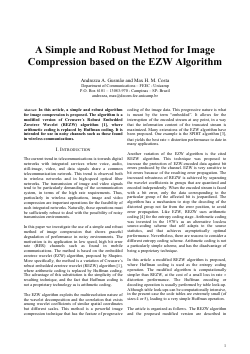
A Simple and Robust Method for Image Compression based on the EZW Algorithm
Andrezza A. Gusmão, Max H. M. Costa
DOI: 10.14209/its.2002.552
Keywords:
Abstract
"In this article, a simple and robust algorithm for image compression is proposed. The algorithm is a modified version of Creusere's Robust Embedded Zerotree Wavelet (REZW) algorithm [1], where arithmetic coding is replace by Huffman coding. It is intended for use in noisy channels such as those found in wireless communications."Download
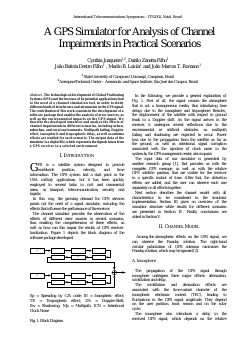
A GPS Simulator for Analysis of Channel Impairments in Practical Scenarios
Cynthia Junqueira, Danilo Zanatta Filho, Joao Batista Destro Filho, Murilo B. Loiola, Joao Marcos T. Romano
DOI: 10.14209/its.2002.558
Keywords:
Abstract
"The technological development of Global Positioning Systems (GPS) and the increase of its potential applications lead to the need of a channel simulation tool, in order to study different kinds of interference and attenuation in the GPS signal. The contribution of this work consists in the development of a software package that enables the analysis of error sources, as well as the environmental impacts on the GPS signal. We describe the developed simulator and analyze the effects of channel impairments in different scenarios, including urban, suburban, and rural environments. Multipath fading, Doppler effect, ionospheric and tropospheric delay, as well as antenna effects are studied for each scenario. The output data of the simulator is a digital file, which represents the signals issues from a GPS receiver in a selected environment."Download
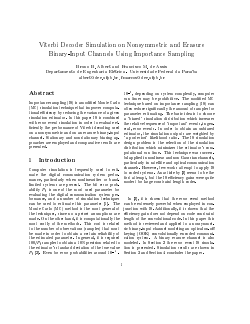
Viterbi Decoder Simulation on Nonsymmetric and Erasure Binary-Input Channels Using Importance Sampling
Bruno B. Albert, Francisco M. de Assis
DOI: 10.14209/its.2002.564
Keywords:
Abstract
"Importance sampling (IS) is a modified Monte Carlo (MC) simulation technique that improves computational efficiency by reducing the variance of a given simulation estimator. In this paper IS is combined with error event simulation in order to evaluate efficiently the performance of Viterbi decoding used on a nonsymmetric and on an erasure binary-input channel. Stationary and nonstationary biasing approaches are employed and comparative results are presented."Download
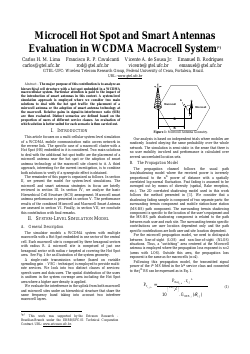
Microcell Hot Spot and Smart Antennas Evaluation in WCDMA Macrocell System
Carlos H. M. Lima, Francisco R. P. Cavalcanti, Vicente A. de Sousa Jr., Emanuel B. Rodrigues
DOI: 10.14209/its.2002.570
Keywords:
Abstract
"The major purpose of this contribution is to analyze an hierarchical cell structure with a hot spot embedded in a WCDMA macrocellular system. Particular attention is paid to the impact of the introduction of smart antennas in this context. A system-level simulation approach is employed where we consider two main solutions to deal with the hot spot traffic: the placement of a microcell antenna or the adoption of smart antenna technology at the macrocell. Relative gains in signal-to-interference ratio (SIR) are then evaluated. Distinct scenarios are defined based on the proportion of users of different service classes. An evaluation of which solution is better suited for each scenario is then carried out."Download
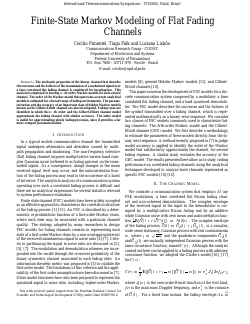
Finite-State Markov Modeling of Flat Fading Channels
Cecilio Pimentel, Tiago Falk, Luciano Lisbôa
DOI: 10.14209/its.2002.576
Keywords:
Abstract
"The stochastic properties of the binary channel that describe the successes and the failures of the transmission of a modulated signal over a time correlated flat fading channel is considered for investigation. This analysis is employed to develop K-th order Markov models for such a burst channel. The order of the Markov model that generates accurate analytical models is estimated for a broad range of fading environments. The parameterization and the accuracy of an important class of hidden Markov models known as the Gilbert-Elliott channel are also investigated. Fading rates are identified in which the K’-th order and the Gilbert-Elliott channel model approximate the fading channel with similar accuracy. The latter model is useful for approximating slowly fading processes, since it provides a far more compact parameterization."Download

Neurocomputation of the Hurst Parameter
Danielo G. Gomes, Nelson L. S. da Fonseca, Nazim Agoulmine, José N. de Souza
DOI: 10.14209/its.2002.582
Keywords:
Abstract
"Network traffic presents long range dependences and is usually modeled either by fractal or by multifractal processes. The Hurst parameter is a measure of the self-similarity of a process. In this paper, a neuro estimator of the Hurst parameter is proposed and compared to statistical estimators"Download
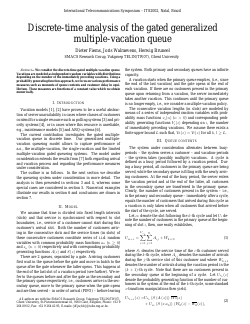
Discrete-time analysis of the gated generalized multiple-vacation queue
Dieter Fiems, Joris Walraevens, Herwig Bruneel
DOI: 10.14209/its.2002.587
Keywords:
Abstract
"We consider the discrete-time gated multiple-vacation queue. Vacations are modeled as independent random variables with distributions depending on the number of the immediately preceding vacations. Using a probability generating function approach, we focus on various performance measures such as moments of queue contents and customer delay in equilibrium. These measures are functions of a constant value which we obtain numerically."Download

Dynamics Sizing of Label Switching Paths in MPLS networks
G. B. Figueiredo, J. A. S. Monteiro, A. A. A. Rocha, N. L. S da Fonseca
DOI: 10.14209/its.2002.592
Keywords:
Abstract
"This paper presents a mechanism for the dynamic sizing of Label Switched Paths (LSPs) in MPLS networks based on an investigation of the mean queue size at the ingress router of the LSP. Upon exceeding established thresholds, the mechanism is triggered and the LSP is resized after a signaling delay. Through simulations using a self-similar traffic modeled by ON-OFF Pareto sources, the shorter the limit the quicker the LSP recovers from an unfavorable situation."Download
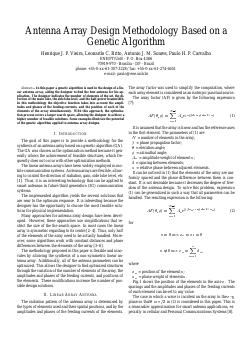
Antenna Array Design Methodology Based on a Genetic Algorithm
Henrique J. P. Vieira, Leonardo C. Brito, Antonio J. M. Soares, Paulo H. P. Carvalho
DOI: 10.14209/its.2002.598
Keywords:
Abstract
"In this paper a genetic algorithm is used in the design of a linear antenna array, aiding the designer to find the best antenna for his application. The designer indicates the number of elements of the set, the direction of the main lobe, the side lobe level, and the half-power beamwidth. In this methodology the objective function takes into account the amplitudes and phases of the feeding currents, and the position of each of the elements of the array simultaneously. With this approach, the optimization process covers a larger search space, allowing the designer to achieve a higher number of feasible solutions. Some examples illustrate the potential of the genetic algorithm applied to antenna array designs."Download